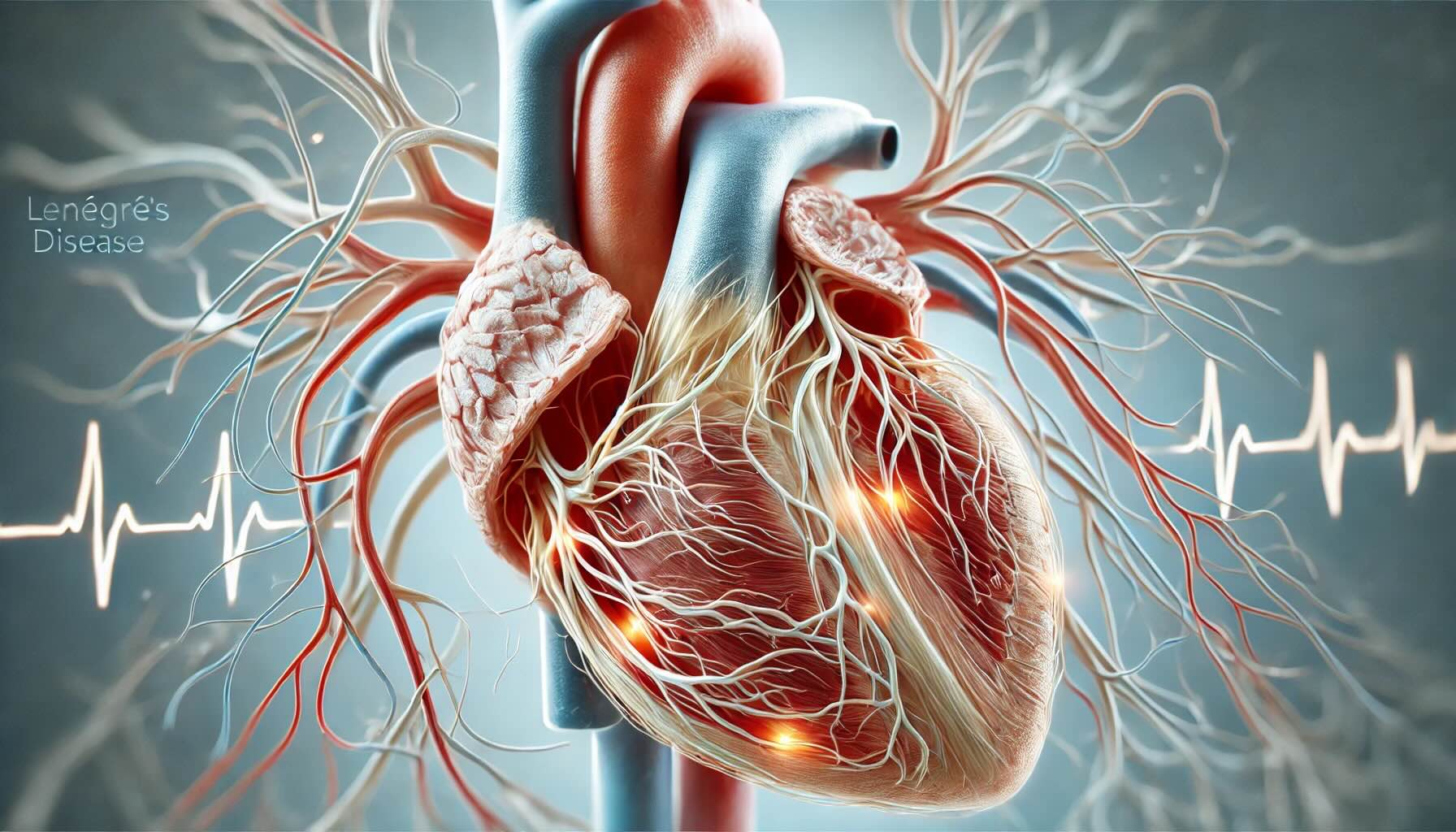
Lenègre's Disease is a rare heart condition that affects the electrical conduction system of the heart. This disease can lead to serious complications, including heart block and arrhythmias. Understanding Lenègre's Disease is crucial for those diagnosed and their families. This blog post will provide you with 25 essential facts about this condition, from its symptoms and causes to treatment options and prognosis. Whether you're a patient, a caregiver, or just curious, these facts will help you grasp the key aspects of Lenègre's Disease. Let's dive into the world of this rare but significant heart condition.
Key Takeaways:
- Lenègre's Disease is a rare heart condition that affects the electrical pathways in the heart, leading to symptoms like fatigue, dizziness, and irregular heartbeats. Early diagnosis and treatment are crucial for managing the disease.
- Treatment options for Lenègre's Disease include pacemaker implantation, medications, lifestyle changes, and regular monitoring. Having a strong support system and prioritizing mental health are essential for living with the condition.
What is Lenègre's Disease?
Lenègre's Disease, also known as progressive cardiac conduction defect, is a rare heart condition. It primarily affects the electrical pathways in the heart, leading to various degrees of heart block. Here are some intriguing facts about this condition.
-
Named After a French Cardiologist
Lenègre's Disease is named after Maurice Lenègre, a French cardiologist who first described the condition in the 1960s. -
Affects the Heart's Electrical System
This disease specifically targets the heart's electrical conduction system, which controls the heart rate and rhythm. -
Progressive Condition
Lenègre's Disease is progressive, meaning it worsens over time. Early stages might show minor symptoms, but it can lead to severe heart block. -
Genetic Component
There is a genetic component to Lenègre's Disease. It often runs in families, suggesting a hereditary link. -
More Common in Older Adults
The condition is more commonly diagnosed in older adults, typically those over 50 years old.
Symptoms of Lenègre's Disease
Recognizing the symptoms can be crucial for early diagnosis and management. Here are some common signs to look out for.
-
Fatigue
One of the earliest symptoms is fatigue, as the heart struggles to maintain a regular rhythm. -
Dizziness and Fainting
Dizziness and fainting spells can occur due to irregular heartbeats and poor blood flow. -
Shortness of Breath
Patients often experience shortness of breath, especially during physical activity. -
Chest Pain
Chest pain or discomfort can be a symptom, though it is less common. -
Palpitations
Irregular heartbeats or palpitations are a frequent symptom, causing a fluttering sensation in the chest.
Diagnosis of Lenègre's Disease
Diagnosing Lenègre's Disease involves several tests and procedures. Here’s how doctors typically identify the condition.
-
Electrocardiogram (ECG)
An ECG is the primary tool used to detect abnormalities in the heart's electrical activity. -
Holter Monitor
A Holter monitor records the heart's activity over 24-48 hours, providing a detailed picture of any irregularities. -
Echocardiogram
An echocardiogram uses ultrasound waves to create images of the heart, helping to identify structural issues. -
Electrophysiological Study
This invasive test maps the electrical pathways in the heart, pinpointing the exact location of the conduction defect. -
Genetic Testing
Genetic testing can identify mutations associated with Lenègre's Disease, confirming a hereditary link.
Treatment Options for Lenègre's Disease
While there is no cure, several treatments can manage symptoms and improve quality of life. Here are some common approaches.
-
Pacemaker Implantation
A pacemaker can be implanted to regulate the heart's rhythm, preventing severe heart block. -
Medications
Medications like beta-blockers and calcium channel blockers can help manage symptoms. -
Lifestyle Changes
Adopting a heart-healthy lifestyle, including a balanced diet and regular exercise, can improve overall heart health. -
Regular Monitoring
Patients need regular check-ups to monitor the progression of the disease and adjust treatments as necessary. -
Avoiding Triggers
Avoiding triggers like excessive caffeine and stress can help manage symptoms.
Prognosis and Living with Lenègre's Disease
Living with Lenègre's Disease requires ongoing management and lifestyle adjustments. Here’s what patients can expect.
-
Variable Prognosis
The prognosis varies widely among patients. Some may live relatively normal lives, while others might experience significant limitations. -
Importance of Early Diagnosis
Early diagnosis and treatment can significantly improve outcomes and quality of life. -
Support Systems
Having a strong support system, including family and healthcare providers, is crucial for managing the disease. -
Mental Health
Mental health support is important, as chronic conditions can lead to anxiety and depression. -
Research and Advances
Ongoing research aims to better understand the genetic components and develop more effective treatments for Lenègre's Disease.
Final Thoughts on Lenègre's Disease
Lenègre's Disease, a rare heart condition, affects the electrical pathways in the heart. It can lead to serious complications like heart block and arrhythmias. Early detection and treatment are crucial for managing symptoms and preventing further issues. Regular check-ups, a healthy lifestyle, and staying informed about the condition can make a significant difference. While it might seem daunting, understanding the facts about Lenègre's Disease empowers patients and their families to take proactive steps. Remember, knowledge is power. If you or a loved one shows symptoms, consult a healthcare professional promptly. With the right care and attention, living with Lenègre's Disease becomes more manageable. Stay informed, stay healthy, and don't hesitate to seek medical advice when needed.
Frequently Asked Questions
Was this page helpful?
Our commitment to delivering trustworthy and engaging content is at the heart of what we do. Each fact on our site is contributed by real users like you, bringing a wealth of diverse insights and information. To ensure the highest standards of accuracy and reliability, our dedicated editors meticulously review each submission. This process guarantees that the facts we share are not only fascinating but also credible. Trust in our commitment to quality and authenticity as you explore and learn with us.
